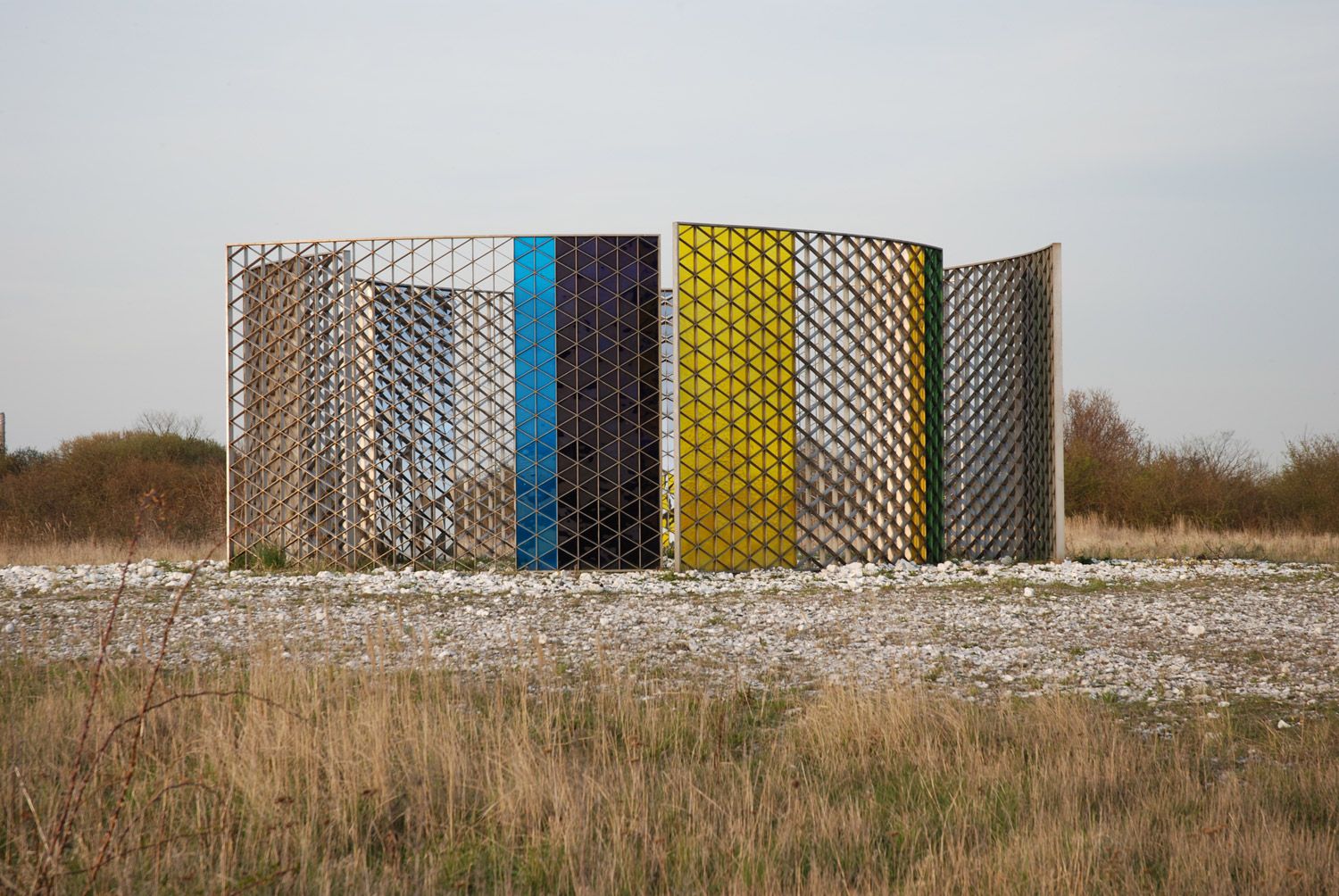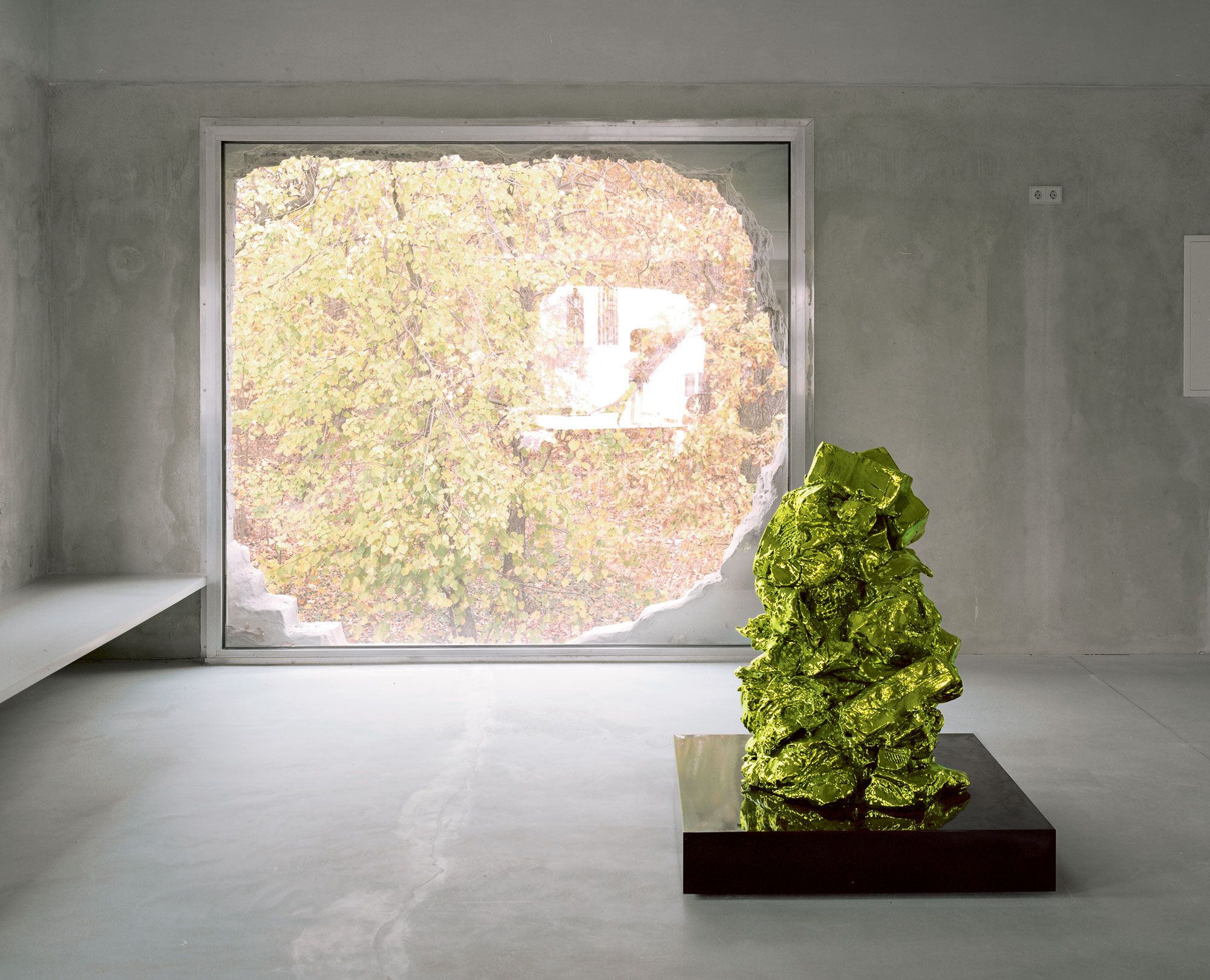CARSTEN HÖLLER: The Brutalist Kitchen Manifesto
|XERXES COOK
Artist Carsten Höller is sure there was a eureka moment that led him to write his “Brutalist Kitchen Manifesto,” but when I ask him about it, he cannot quite remember where or when it took place. Perhaps it was a reaction to many dissatisfying haute cuisine experiences. Or perhaps it stemmed from the same libidinal modernism that caused F.T. Marinetti to drive his car into an industrial ditch and write the “Manifesto of Futurism.” As Höller himself describes, the endeavor was marked by a wish to “access a kind of food rare among the restaurant world, one grounded in purity and bringing straightforwardness to a certain extreme.”

While the Belgian does not claim the manifesto as part of his artwork, there are resonant frequencies. In 2008, Höller opened The Double Club in London, a half-Congolese, half-Western restaurant created in conjunction with the Fondazione Prada. In true “Brutalist Kitchen” fashion – the manifesto rails against any kind of fusion food – the menus and music from each of the cultures were kept separate and presented directly opposite each other. It was a collision designed to shake the viewer out of rationality’s straightjacket.
Before becoming an artist, Höller was an agricultural entomologist who specialized in olfactory communication. It is a term that brings to mind the way in which today’s telecommunication society has heavily favored the audio-visual above senses such as smell and taste. Our literacy as listeners and watchers has arguably become much more advanced, while our sense of what food should taste like has been blended into a monotonous slurry of processed products.
Höller’s intellectual curiosity in animal behavior also runs through his practice as an artist. His large-scale installations, such as his 2011 solo exhibition at New York’s New Museum, often embody an aggressively empirical strain of relational aesthetics. Höller once fashioned an entire eco-system in Berlin’s Hamburger Bahnhof that fed on hallucinogenic fly agaric mushrooms. He has also recreated tests that gauge the level of self-awareness in great apes. Yet, there is no animal that holds Höller’s affection as much as songbirds. So much so that he lives alongside them at his home in Stockholm, as well as in the concrete beach house he built with artist Marcel Odenbach in Ghana, a masterpiece of amateur Brutalism.
It therefore came as a surprise when Höller finally recalls that an experience of eating bird brains at Ferran Adrià’s El Bulli was in fact his manifesto’s madeleine. It was two dishes of two heads served one after the other – one of a woodcock, the other of a hare. They were cooked and served in their own skulls. “El Bulli was very much about diversity,” Höller explains, “And they were fantastic ingredients, perfectly cooked. There was nothing funky done to them. It was really just the meat together with its bony container. It was 100 percent Brutalistic, in every sense of the word.”
Before we get any further, it is important to state that the “Brutalist Kitchen Manifesto” is not about inflicting pain on animals, vegetables, or fungi. Take the ortolan bunting, for example. It is a bird prized by French gourmands, who fatten them on figs, kill them by drowning them in arma- gnac, then roast them in a pan. They are eaten whole – head, beak, bones, and all. The dish is notorious for being “France’s cruelest food,” and tradition dictates that the eater must cover their head with a napkin while they consume the bird in order to savor the aromas and to hide the act of eating such a beautiful animal from God’s eyes. While death by armagnac is not strictly Brutalist – even if it is definitely brutal – Höller was curious to see what the fuss was about. “It must be delicious, otherwise people wouldn’t make such an effort” – an effort that has resulted in their European population dropping by as much as 90 percent over the past 30 years. As a lover of birds, Höller condemns the now illegal hunting of the ortolan bunting, so he set about breeding a pair of them in his Stockholm apartment for the purpose of eating their young. However, after welcoming 12 of them into the world, he became so attached to the chicks that he could not bring himself to pop open the armagnac. “I’m very bad at killing, in general. And once you’ve bred them, they become a part of yourself,” he explains, “But at some point, one male killed a female, and this female I ate.”
Instead of pain, the “Brutalist Kitchen Manifesto” is about isolating a particular property of an ingredient. It is a process that contains the same combination of theatricality and modernist formalism that characterizes the work of Brutalist architects such as Le Corbusier, Ern Goldfinger, and Ricardo Bofill. What they honed with the potential of concrete – the world’s second most consumed substance after water – Höller is doing with food. The manifesto and its progeny, “Brutalist Cuisine,” are about “cleaning an ingredient from the background noise” of garnishes and extraneous flavor, “taking it out from nature – a context that may be too complicated for us to understand – and then preparing and serving it in a manner so that it can be experienced in a more insightful way.”
In this sense, Höller’s manifesto for eating and cooking goes way beyond the now ubiquitous notions of “slow food.” It is an eccentric thought experiment that could be read as a stance against a twenty-first-century context in which content and meaning have been baked into a homogenous lasagne. As Höller explains, food is an inherently un-storable medium – its experience cannot be saved on a hard drive. In this sense, cuisine is potentially the ultimate post-digital form of communication.
In conversation with Xerxes Cook, Carsten Höller takes 032c through the 11 parts of his “Brutalist Kitchen Manifesto”:
1. Don’t think recipe. It’s all about the ingredients. Go shopping and see what you find. Put effort into finding particular ingredients.
CARSTEN HÖLLER: I don’t understand why there are so many cookbooks around with recipes. I find that really bizarre. Okay, I understand some people have fun reading it, but when it says, “Take a chicken and do this …” – what kind of chicken do you take? There are so many different chickens. And then, what about the temperature – should it be taken from the fridge? Do you get a fresh one, or one that’s been laying a little? And if so, how long exactly? Under what conditions? All these things are rarely mentioned. A recipe like this is like an architecture do-it-yourself book that says, “Take a glass window and some stones, and then put a piece of wood on top of it.” What kind of house would that be?
XERXES COOK: Is it about bringing some spontaneity to cooking with the challenge of finding the freshest, most intriguing ingredient available that day, and then figuring out how you’re going to cook it?
If I have guests, I never know what I’m going to cook. Even though I may have some ingredients at home, aging, cur- ing, or just in the cupboard, I like to go shopping for special, rare ingredients. For instance, there’s a mushroom that grows in northern Sweden which is highly appreciated by the Japanese. It’s super expensive. In Japan it costs more than the white truffle. Almost nobody eats it in Sweden, so they ship it to Japan, where there’s a big fuss about it. So, it’s interesting for me, living in Sweden, to contact this one guy picking these mushrooms and ask him to send two, three kilograms to Stockholm. And he does. You have to be knowledgeable about food, curious, and careful about where you can source very special things.
What have you got in your freezer at the moment?
I have some smoked lampreys, an eel-like fish with nine eyes on each side – at least that’s how they look – that sucks blood from other fish. I have two game birds from my supplier, who said he doesn’t know what they are. I have some ants from Mexico, which are delicious. What else? I have some bone marrow. And lots of frozen insects to feed my birds.
Do you have any qualms about eating birds, considering how passionate you are about them?
No, why should I?
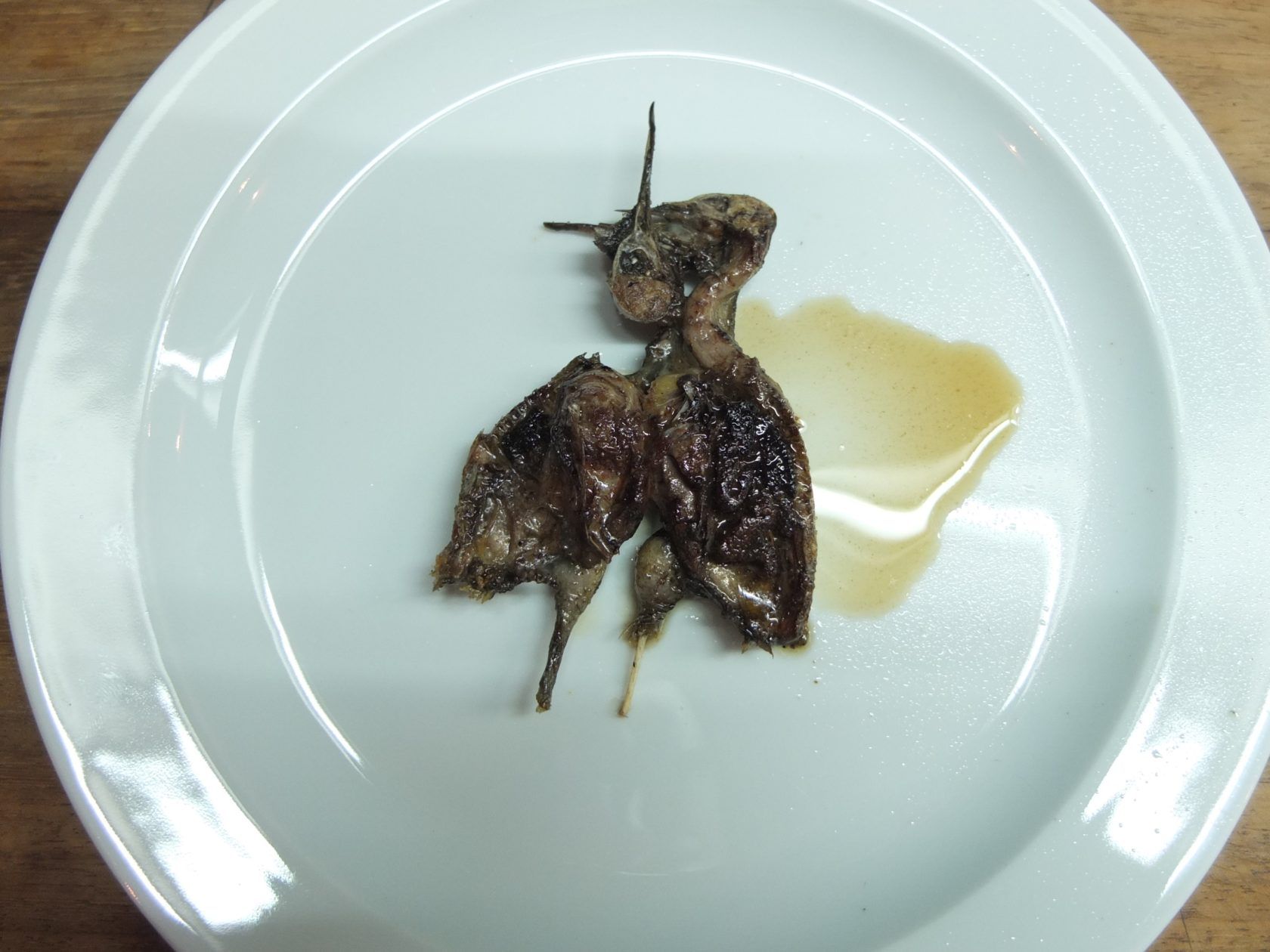
2. Pay special attention to overlooked, hard-to-get, rare ingredients, or ingredients that are generally discarded.
As a starter, why don’t we eat chicken brains? I’m sure they would be delicious, especially with regard to the woodcock I ate at El Bulli. In our part of the world, the heads of birds are not usually eaten. What do we do with all the heads of all these chickens that we kill for consumption? So the manifesto is also about using ingredients which are not used, or overlooked, or considered not good enough. By preparing them the right way, you not only make them edible, but you can also make a proper Brutalist dish. In these photos of Brutalist dishes, we have a common sandpiper, which I prepared in Ghana, with the head opened after it accidentally died.
How about the bat?
That’s an example of what we shouldn’t eat. I know people who have eaten these fruit bats. And since the real Brutalist chef hunts for rare ingredients, he or she would not be stopped by a bat. But given the fact that fruit bats have likely been spreading Ebola from the DR Congo to West Africa, I think this is a rare ingredient one might skip.
How does the manifesto address the ethics of eating rare animals?
I’m an environmentalist. I would say I’m a conservationist, but it’s such a strange word – it sounds politically wrong. I would like to be able to protect vulnerable lifeforms from over-exploitation. That’s why I say the ortolan bunting shouldn’t be caught anymore. It could still be eaten, but to eat it, you have to breed it, and you would probably get very similar results to the wild ones. The wild-caught ones are still fattened in small cages for months before being killed. But you can’t just find pleasure in eating the last specimens of its kind, knowing they’ll soon be gone forever. This is reckless and ridiculous. Brutalist cuisine also means a certain responsibility towards protecting your ingredients.
3. Prepare straightforward dishes that are about the taste of one ingredient. Avoid putting together several ingredients.
Are the methods behind cooking and serving seafood, crustaceans especially, inherently Brutalist?
Totally. Grey shrimp were actually the first thing I ever cooked, and perhaps my first strong food memory. These little shrimp are common on the Belgian North Sea coast, and as a boy I caught them with a little net on a wooden stick that you push through the sand. You get a good ingre- dient like these shrimp and you cook them in their own natural medium – seawater – and then eat it without anything else. That’s a nice Brutalist dish.
I had them the other week. They’re so fiddly to peel that I gave up.
They have to be peeled by hand. There’s no machine for this. So they ship them to North Africa to factories where people peel them, then they ship them back and sell them as “local” with loads of preservatives.
It’s way more satisfying to take a hammer to a crab than fuck around with these small shrimp. All this talk of crustaceans makes me think of Salvador Dalí’s cookbook, which, oddly enough, may be a closer parallel to this manifesto than Rirkrit Tiravanija’s relational aesthetics. In that way, it’s about an artist’s vision of food itself rather than the social interactions that food brings.
Maybe, but everybody’s interested in food at the moment, it seems.
Do you think it’s because food is one of the only experiences that can’t be co-opted within a digital context? Do you see food as a post-digital medium for expression?
Yes. Because food is very ephemeral – you can’t keep a taste in your mouth, and it’s probably meant to be like this. You can only experience it through your taste buds, your olfaction, the consistency of it, but it vanishes somewhere inside you. The taste of food is not something like music, which you can listen to over and over again. It’s there and then it disappears. The taste experience can’t be stored, neither digitally nor in some other way.
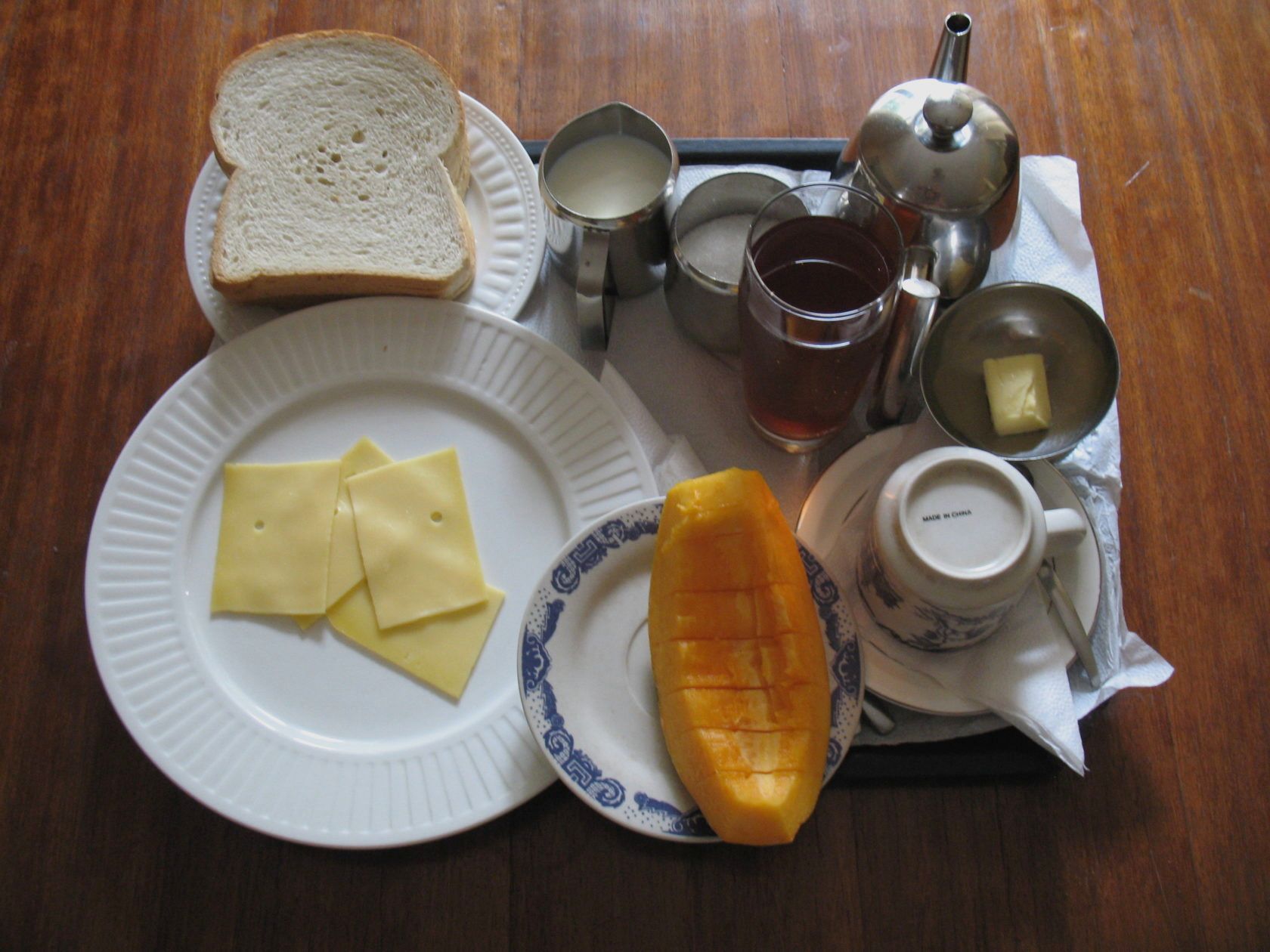
4. Elaborate cooking techniques are allowed. It’s not about a lack of sophistication, just a commitment to purity.
Brutalist cooking doesn’t have to mean a piece of meat that you fry quickly. That can be Brutalist food, but Brutalist food can also be something that you have very carefully planned over long periods. Like slow cooking, or like how I do soups. I like to extract the taste in a way by letting it simmer, boil, and then cool down again. And to do this process five, six times.
Which kitchen utensils are essential and which are banned – are tweezers banned?
What do you mean by tweezers?
For garnishing, like when a chef puts some little flowers on top of something to finish a dish.
This is totally forbidden.
How about sous-vide?
Sous-vide cooking is allowed. It’s actually quite Brutalist, because it’s a technique that tries to keep the ingredient as whole as possible, and cooking in its own juices. Cooking with sous-vide is a very acceptable, even highly favored, Brutalist technique.
Are there any other utensils you care to discuss?
I don’t see any method you shouldn’t use, as long as you stay firm with the principles.
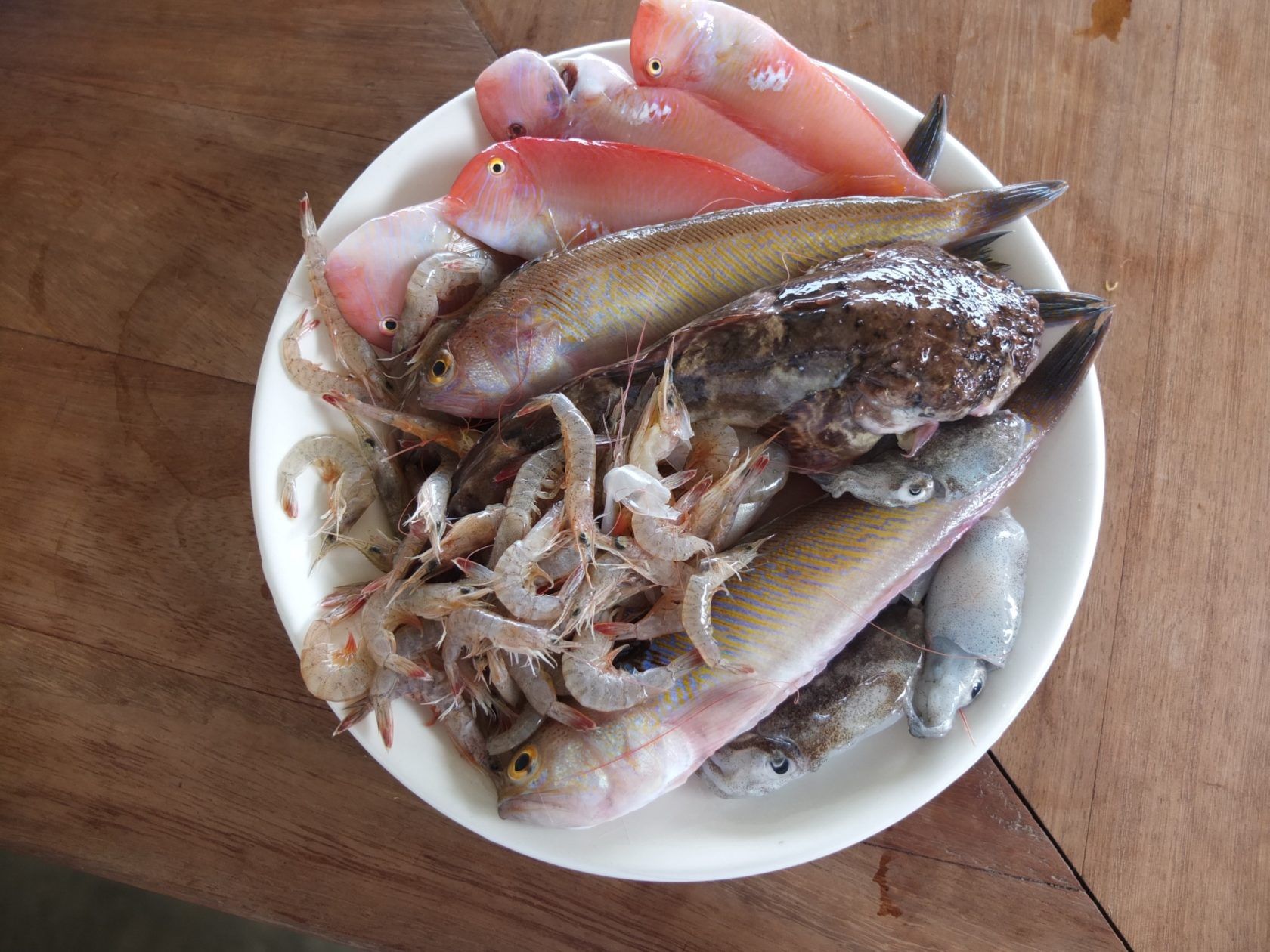
5. Liquids like soups and stocks do generally require a combination of ingredients,but they should be treated like the nutrients that feed the plant, mushroom, or animal. It should all be part of the “singular” taste of an ingredient.
This is a contradiction. If you say you want to achieve something pure on a plate, you could argue a soup is not pure because you need ten different ingredients to make a soup. So, how do you deal with that? You can answer it by pointing to plant biology. For instance, a salad plant grows in the soil and there it takes up a lot of different nutrients and trace elements. It might also respond to a herbivore attack by producing a chemical defence. It might communicate with its fellow salad plants and other plants both above the earth and underneath. So this salad plant has this whole history of taking up and changing things that then produces its unique taste. A soup is somehow similar in this sense. You’re adding ingredients in a solution, and you extract the taste. You come up with something comparable to an organism, because it’s also about producing a base. So, a soup can be compared to an ingredient itself.
David Chang makes the ramen soup at Momofuku by freeze-drying the individual ingredients that go into the stock, and then boiling them up together so that a flavor that would have taken two days of simmering can be achieved in ten minutes.
Freeze-drying is not available to all of us, and you want to avoid some kind of hocus-pocus theatrical cooking. You want to make this as simple as possible. It’s not just about purity but also about simplicity, which often go hand in hand.
What do we drink with Brutalist cuisine?
It depends on you, the time of day, and on your wallet, but a good wine is always recommended. Good wine is Brutalist in the sense that it can be very complex. You drink it at a certain temperature to optimize the flavor of it, and it’s a pure product in which you wouldn’t want to put any ice or whatever. I hadn’t thought about it until now, but these new “natural” wines may be comparable to Brutalist food in how they try different techniques in order to bring out something that is within the ingredient. More than in some very sophisticated techniques where they blend different grape varieties.
Natural wines are composed of a singular grape variety?
No. But they tend to have less grape varieties. And natural wines use different methods of cultivation and post-har- vest treatment. Natural wines are the Brutalist ones.
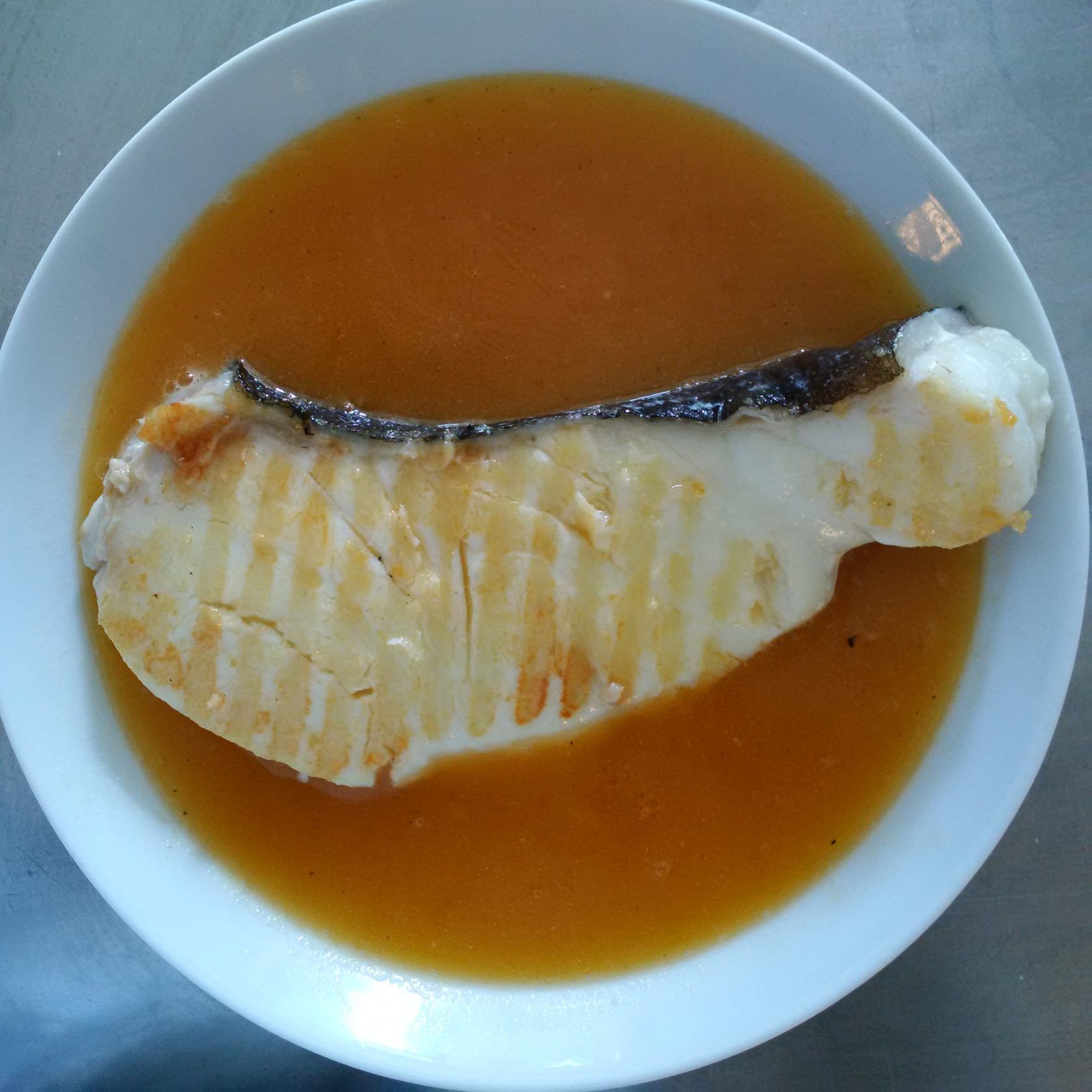
6. Decoration on the plate should be avoided.
That was covered with the tweezers.
What are some of your other pet peeves?
Hypertrophied thyme branches are the thing I hate most. A branch of thyme on top of a steak. I don’t know where it comes from, but it’s bad. It’s probably a derivative of this idea from the 1950s where you have half a tomato with some parsley as a decoration on the plate.
Is it similar to Le Corbusier painting over Eileen Gray’s E-1027 house in the South of France, to make an archi- tectural comparison?
He painted some of the walls, and they’re actually quite good, I have to say. No, I don’t think you can compare his wall paintings to a branch of hypertrophied thyme.
7. Portions should be of a substantial size.
I dislike it when there’s not enough on my plate. If you avoid the combination of ingredients on the plate, you have only one ingredient to focus on. And while you eat this ingredient, there’s a whole process going on. It is a process that also happens inside you, the eater: from when you first see, then smell, and then put something inside your mouth. The more you eat, the more you take in of it, and the more twists it gets. You know this very well from wine. You open the bottle, decant it maybe, and the first sip is a very differ- ent taste to the last sip at the end of the bottle – not only because the wine has changed, but also because you have changed. The same applies to food. To just serve one or two bites, as they do in many fancy restaurants, is okay if you want to present a lot of tiny dishes, but the Brutalist likes to have a substantial amount and explore the change of perceptions of this food during a prolonged meal.
So size is as much about time.
I think that’s often overlooked. If you have a piece of warm meat, it becomes colder and colder while you eat it, and each bite responds to the pieces you have eaten before. Your inner lust system wants you to eat more, while the other side of you says, “Enough, I’m full.” All this becomes an inner choreography that changes, which you can only ex- plore if you have enough of it to eat.
8. Brutalist cooking has its origins in traditional Mediterraneanor Japanese cuisine, but is neither Mediterranean nor Japanese.
This reminds me of eating a fish or an octopus leg, cooked simply on the grill when I’ve been on holiday on a Greek island.
That’s Brutalist in a level-one sense. The next level might be Japanese sashimi, because it’s all about how to cut the fish, and the freshness of it. Sashimi is properly Brutalist. Many people at home cook Brutalist, because you don’t want to do this layering. You just want to eat your ingredient the way you want to eat it. It’s a kind of natural thing.
What about Thai food, which is all about bringing together four flavors: salt, sweet, hot, and sour?
Thai food is the opposite of Brutalist cuisine. It can be delicious, but it’s a different concept. Brutalist cooking is open to all kinds of cuisines in the world. It’s just a certain concept of treating the ingredients while you make the food.
What about fusion food, though. My wife is half-Japanese, half-Swedish and she can’t stand fusion food.
Brutalists hate fusion food. She’s right. When we set up The Double Club, they asked whether we should do Congolese food in a Western way, and Western food in a Congolese way. And I said, “Absolutely not!” The whole idea of The Double Club was to avoid fusion by all means. Take the music, for example. There were Western DJs playing in the disco on Fridays, and on Saturdays Congolese bands performed.
This musical flip-flopping was taken to extremes on Thursdays, with a revolving dance floor complete with a DJ booth that took an hour for each rotation – as the DJ reached a line marking out 30 minutes, he or she would switch from Western to Congolese music and vice versa.
Yes. And food was separated in the sense that you would either get purely Western food or Congolese food, yet they were on the same menu. The left page was Congolese, the right page was Western.
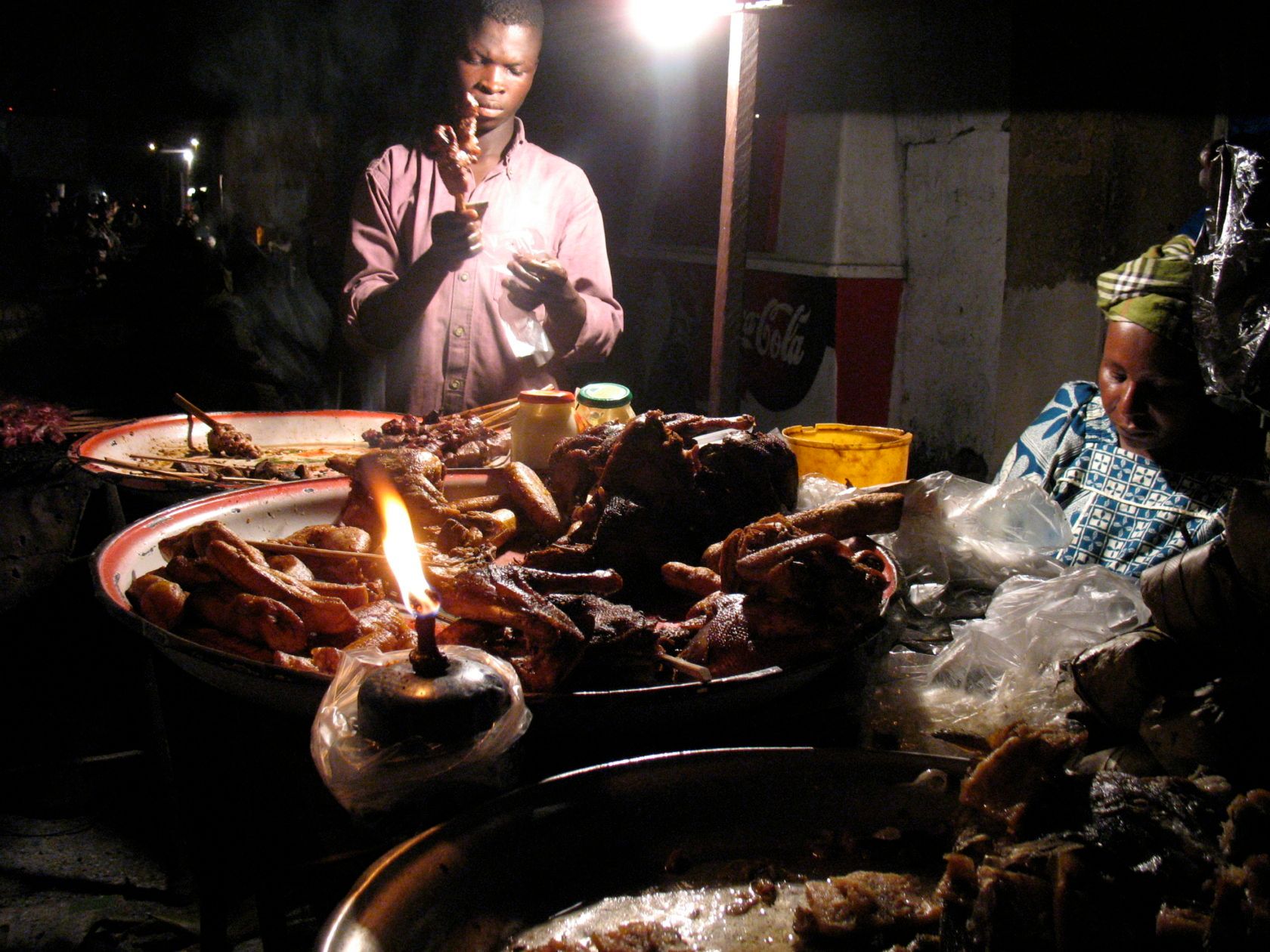
9. The “Brutalist Kitchen” is named in reference to Brutalist architecture, renowned for its “linear and blockish” appearance.
People often confuse Modernist architecture with Brutalism – what are the differences when it comes to cooking?
It’s just a proposition. Brutalist food is not some kind of dogma that needs to have a sharp border towards other ways of cooking. It’s about getting some things that have developed in a different direction to be more straightforward. It’s about using techniques in the Brutalist way.
Do you have any food routines? For lunch, for example, I cook something egg-based – an omelette usually – so I don’t expend too much energy thinking about what I’m going to eat, or energy digesting it. And I don’t think I’m the only person to operate along these lines. Gilbert and George take it to another extreme, eating at the same restaurant for lunch, and another for dinner, day-in, day-out.
I eat a late lunch, because after lunch the day is different – lunch divides the day into two parts. I have my artistic energy – if that’s what you want to call it – in the morning when I wake up. So my routine is more like: coffee in bed, breakfast I don’t care much about, unless I’m in a hotel and they have an exceptional breakfast, then lunch, which I take care of in a good way, and then dinner, which is usually the highlight of the day when it comes to eating.
Are big, brutalist portions at lunch a problem?
I like big lunches too, and then a siesta after. It cuts the day in two, and then you need another wake-up time, which could be another productive time. People are different, and you have to find the way that suits you. Some people like to take the same route. Gilbert and George are these kind of organisms that live in a very specific niche. And other ones who are more opportunistic, like me, want to get the best out of it and see what the possibilities are in terms of what you can eat.
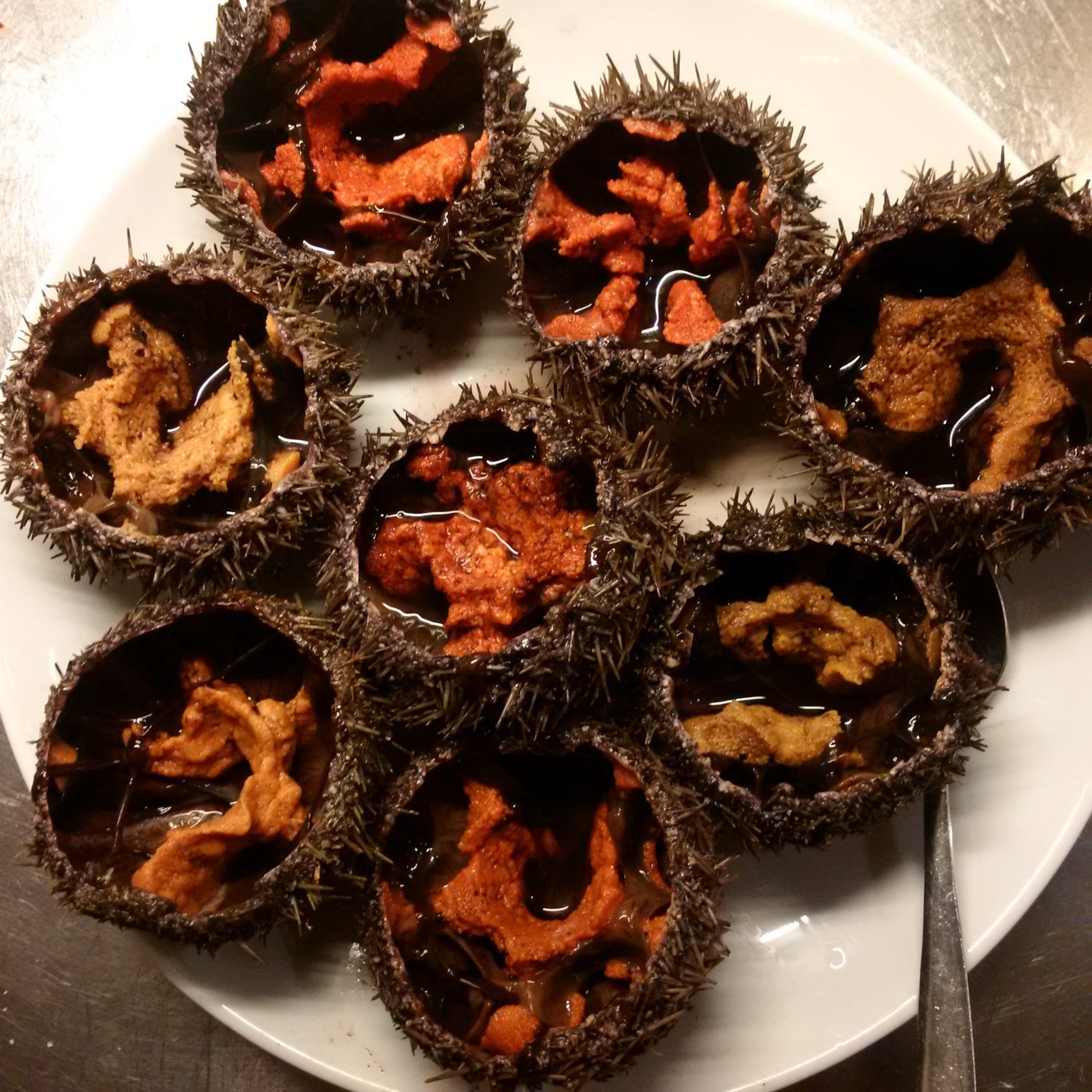
10. We are born as Brutalist eaters, as mother’s milk is essentially Brutalist.
One other thing to consider is that we all have been, or most of us have been, Brutalists in the early days of our lives, because what else is mother’s milk but Brutalist cuisine? We were born Brutalist. I’m proposing we should stay Brutalist, come back to the roots of it, and appreciate what Brutalist cuisine could do for us.
Talking about food and productivity – what do you make of Soylent?
I tested it for the first time the other day. It reminded me of the formula they give to babies. Though there are different flavors, it’s not about taste. You’re taking in more or less the same stuff every day. So that’s an extreme version of Gilbert and George, in terms of a strictly niche-oriented behavior with very little flexibility – if you live only on Soylent as some people do. It’s like listening to the same song every day and no other music. Even if it were a great song, I think there is nothing there for me.
Variety is the spice of life, after all. Soylent seems to be something the Futurists would have approved of. Filippo Tommaso Marinetti banned pasta because of how carbs make people slumpy after they eat it. There was a social purpose to the Futurist’s cookbook, which Marinetti de- scribed as holding “the lofty, noble, and universally expedient aim of changing radically the eating habits of our race, strengthening it, dynamizing it, and spiritualizing it with new food combinations.” Even if a lot of the Futurists’ recipes would taste surely awful if you were to ever cook them, there was this purpose of engendering “progress.” What do you have to say to those who may view your manifesto as a move backwards?
In the 50s, for instance, we had a limited amount of variability in food. We had local food that was different from place to place, and you couldn’t easily get Italian food in a German town, or at least Italian food that was deserving of the name. And in the last few years, we have witnessed an enormous increase of variability in food, especially in bigger cities like London – you can have almost any kind of food there. And you can find a lot of ingredients. This has definitely enlarged itself because of a certain need for people to explore food, and I think it’s affected them, as Marinetti al- ready pointed out. “Du bist was Du isst,” as we say in German. You are what you eat. And in this sense, the “Brutalist Kitchen” is another extension of variability of food by extending into ingredient-based food.
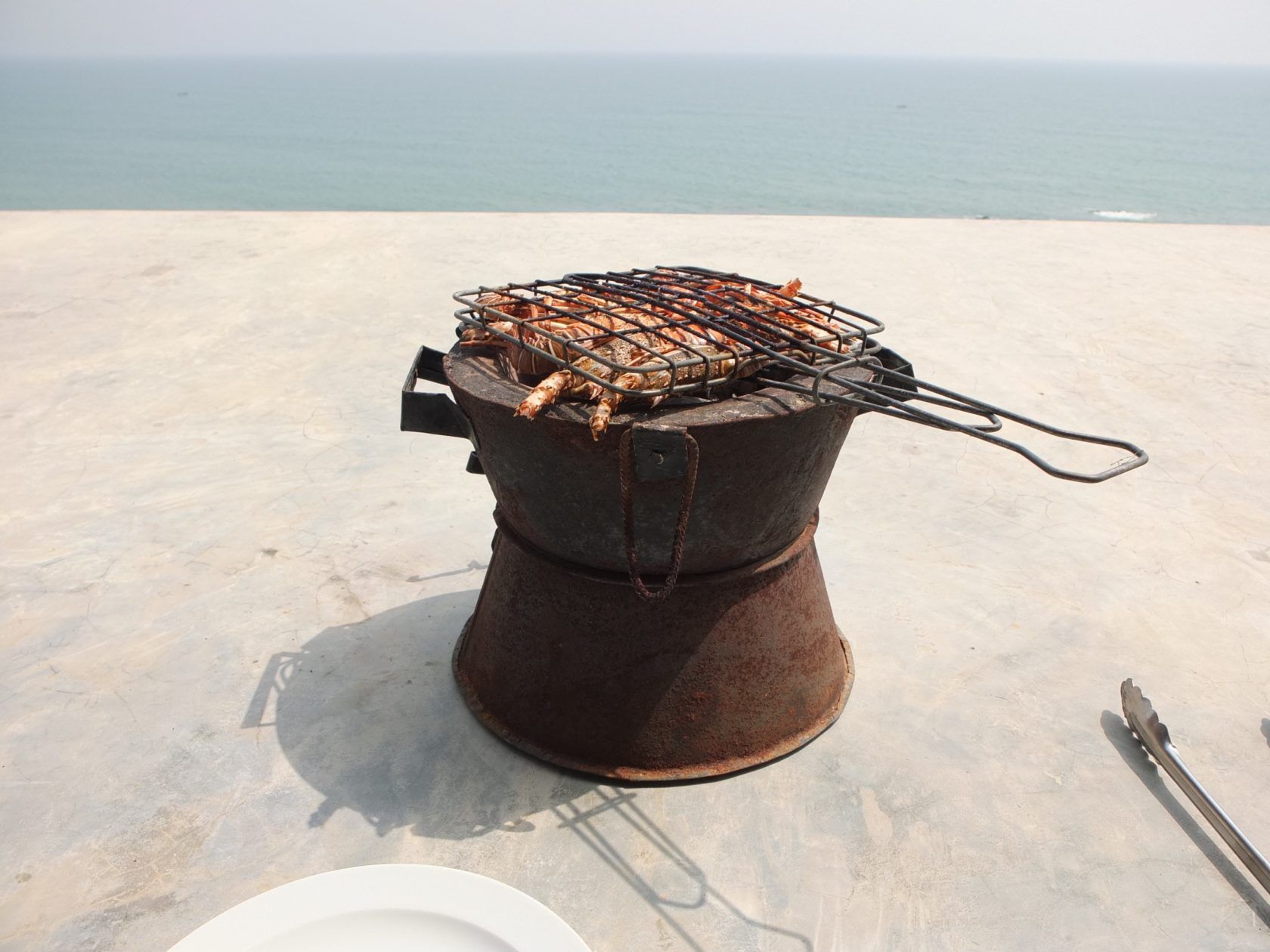
11. As of today, there is not one restaurant in the world that deserves to be called Brutalist. However, people often cook Brutalist at home.
What about St. John’s? You might not have bone marrow in your freezer if it weren’t for Fergus Henderson.
St. John’s deserves credit for bringing traditional English cooking back on the plate with a contemporary twist, in a sense purifying it, and taking some things away that may suffocate the taste of certain ingredients. This definitely goes in the right direction, but I think you can go even further. Take their langoustines with mayonnaise, for example – if you have a good langoustine, you don’t need the mayonnaise, which I find to be another suffocating, unnecessary extra on the plate.
So I guess you don’t take lemon with your oysters.
Please, no lemon. If you don’t take lemon with your oysters, then you can taste the differences between all the different varieties of oysters that are out there. There’s another seafood which is so remarkable, the sea urchin – each one tastes different from another. It would be a crime to add lemon to it.
Could you imagine opening a Brutalist restaurant?
I think this could be possible – a restaurant where you don’t order a dish but an ingredient, and then another one, and you don’t eat them together on the same plate as you normally do, where you try to create a “super-taste” that’s bigger than nature. But you eat them one after another, or put everything on the table at the same time, and in the end you curate your own experience within your stomach. You don’t pile it up on the plate. It all gets piled up in your intestines. It would be like a tapas bar, but with Brutalist portions.
Credits
- Text: XERXES COOK
- Portrait: JOHN SCARISBRICK
